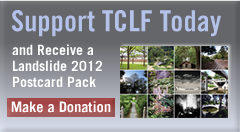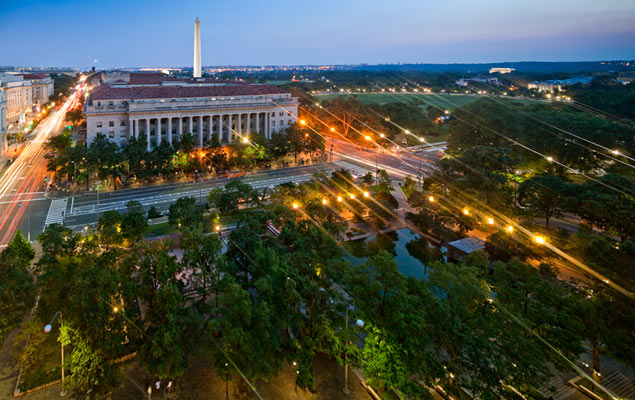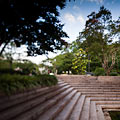
Pennsylvania Avenue
Washington, DC
The committee had characterized the Avenue as “the grand axis of the city as also of the Nation, leading from the Capitol to the White House,” and also called it the symbolic passage between two lofty centers of government – illustrating the separation of powers but also their linkage in a deeper unity. — Report of the President’s Council on Pennsylvania Avenue, 1964
History
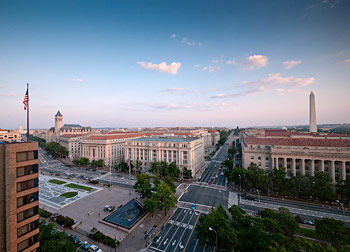
Pennsylvania Avenue from the Willard Hotel, photo © Allen Russ.
Pennsylvania Avenue, created in 1792 as Washington’s central thoroughfare, was a significant element of Pierre L’Enfant’s 1791 plan for the Federal City. The most noteworthy section of its 20-mile length is the 1.2-mile long stretch that runs diagonally between Capitol Hill and the White House, providing both a physical and symbolic reminder of the association between the legislative, judicial and executive branches of government. This section became the Pennsylvania Avenue National Historic Site in 1966, later part of the Pennsylvania Avenue National Historical Park (part of the U.S. National Park System); the National Park Service is responsible for overseeing and maintaining the parks, plazas, and sidewalks.
In 1803, the avenue was designated an official parade route by President Thomas Jefferson, who, envisioning it as a grand boulevard, had Lombardy Poplars planted along its length. It was the first street in Washington to be lit by streetlights and a major focus of the McMillan Commission’s 1901-1902 plan for the City.
During the 1961 inaugural parade for John F. Kennedy, the new President noticed that the Avenue had fallen into disrepair and in that year created the President’s Council on Pennsylvania Avenue to address its lackluster state. The council proposed simplifying intersections, building new public spaces, and opening up vistas between the National Archives and National Portrait Gallery. After Kennedy’s assassination in 1963 Lyndon B. Johnson advanced the work by establishing the President’s Temporary Commission on Pennsylvania Avenue. Members of the commission included Nathaniel Owings, Dan Kiley, Daniel Patrick Moynihan, and Chloethiel Woodard Smith.
In October of 1972, an act of Congress created the Pennsylvania Avenue Development Corporation (PADC) to prepare a plan for the Avenue and some 16 blocks north of it and manage the design and implementation of that plan, including improvements to the Avenue. The innovative partnership, a federally-owned corporation, administered by a fifteen-member Board of Director’s, led by Executive Director John Woodbridge, sought to engage the public in the redesign of the significant thoroughfare. Initial funding for the project came through in 1973, and in 1974, the PADC published The Pennsylvania Avenue Plan: 1974, based in part on recommendations put forth in the 1964 Report of the President’s Council on Pennsylvania Avenue. In its Plan PADC attempted to establish visual and physical continuity within the Avenue’s core, provide refurbishments, and remedy problems with traffic and pedestrian circulation. PADC anticipated that its work would become an economic catalyst for the adjoining downtown area.
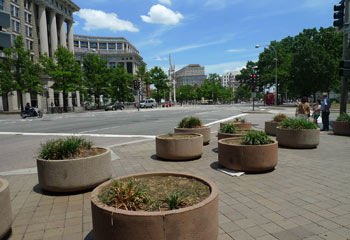
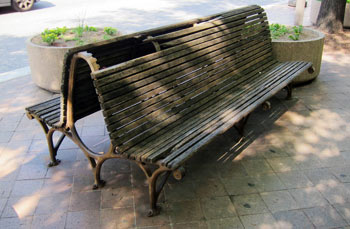
Photos courtesy the Cultural Landscape Foundation.
The work of PADC addressed both the buildings and the landscape along the Avenue. Major initiatives included establishing a consistent building height requirement of 135 feet to frame the Avenue by matching the building height of the 1930s Beaux-Arts style Federal Triangle Complex that anchored almost the entire southern side of the Avenue, and creating a consistent 50-foot setback on the north side of the Avenue, which allowed PADC to widen the northern sidewalks to accommodate a third row of newly planted Willow Oak trees. PADC oversaw all public improvements along the Avenue, which included repaving the street, and the installation of a unified streetscape of square brown brick pavers, granite curbing and trees (conceptual design by Sasaki Associates), tree grates and wood and cast-iron benches (designed by Albert Paley) and trash cans, fountains and lighting. Beginning in the late 1970s, prominent architects and landscape architects were hired to contribute to the design and redesign of eight public spaces, which included Freedom Plaza (Venturi, Scott, Brown and Associates, George Patton, Oehme van Sweden & Associates) Market Square Park (Conklin Rossant, Eric Gugler), Indiana Plaza (Tippets-Abbett-McCarthy-Stratton), John Marshall Park (Carol R. Johnson and Associates), Sherman Park, Mellon Park, Pershing Park (M. Paul Friedberg + Partners, Oehme van Sweden & Associates) and Meade Plaza (Bernard Johnson, Inc., Gruen Associates, Oehme van Sweden & Associates), the last of which was completed in 1993.
Congress dissolved PADC as of April 1, 1996, with only a few sites remaining to be redeveloped or renovated. When completed, development that took place within the Plan’s boundaries generated millions in private investment; over the years the cumulative return in tax revenues from this private development more than exceeded the government’s investment in public improvements along the Avenue.
Since the completion of PADC’s work, changes to the Avenue have been minimal. A notable exception was the closure of the portion of the Avenue in front of the White House grounds and Department of Treasury building after the 1995 Oklahoma City bombing. Michael Van Valkenburgh and Associates redesigned the three-block section under the National Capital Planning Commission’s guidance as a pedestrian thoroughfare in 2004.

Patron
Pennsylvania Avenue Development Corporation
Threat
The threat to the Avenue is threefold: first, the Avenue’s public improvements have been ill-maintained since 1996 when Congress terminated the PADC. The streetscape has deteriorated, benches are falling apart, tree roots have pushed tree grates out of their original positioning and trees have been cut down and not replaced. Contributing landscapes have also been allowed to fall into disrepair. Water features at Pershing Park, Freedom Plaza and Mellon Square are often not functioning, street furniture (e.g. trash receptacles, benches, tree grates) are aging and need restoration.
Secondly, security concerns have been addressed without acknowledging the appearance of the Avenue. Large concrete planters have been plopped along sidewalk edges and at building entries in an attempt by the Federal Government to increase security along the route. Today, many of these concrete planters, which look like a temporary solution to security concerns, are filled with dead or dying plants (and sometimes no plants at all), and they diminish the character of the Avenue, disrupt pedestrian flow and deter from the iconic streetscape.
Thirdly, the current Pennsylvania Avenue National Historic Site is only recognized for contributing historic elements from the 1791 to 1962 period. Later features, most significantly the work implemented by PADC, are not included in this designation. These are unique and nationally significant components of this iconic Washington, DC landscape, and like other periods of development along the Avenue, are an integral part of the Avenue's history.
How You Can Help
Contact Robert Vogel, Superintendant, National Mall and Memorial Parks at the National Park Service and urge for better maintenance of the nation’s most important processional space. In addition, the Park Service should explore an expansion of the period of significance for the Avenue to include the PADC’s contributions—especially the Modernist parks created by nationally significant landscape architects during its tenure, in all future planning and development initiatives.
Learn More
Pennsylvania Avenue
Roughly bounded by Constitution Avenue, 15th, F and 3rd Streets
Washington, DC
